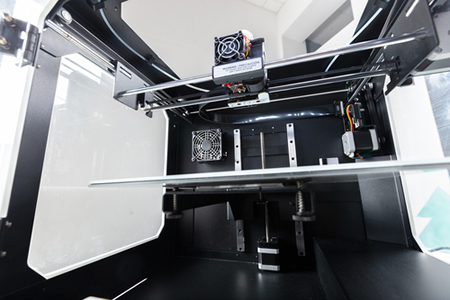A team of researchers from Imperial College London and King’s College London have used cryogenic 3D printing to artificially create soft tissue with similar mechanical properties to brain and lung tissue.
While researchers have developed techniques to 3D print artificial tissues that are flat, which have been successfully transplanted into patients, the creation of soft tissues has been much more of a challenge. Because the tissues are soft, they do not retail their shape after printing.
3D printing involves depositing cells in layers onto a scaffold which helps keep the cells in the correct position. However, the scaffolds themselves carry a risk of rejection when transplanted in the body.
The researchers came up with a novel method of printing tissues that are soft enough to mimic brain and lung tissue, but with sufficient structural rigidity to retain their shape after the printing process.
Rather than keeping the 3D printed tissues at room temperature, the team used a cryogenic 3D printing. Cryogenic 3D printing involves rapidly cooling each layer of cells as it is printed, essentially freezing the cells in position. This ensures each layer has sufficient rigidity to accept the next layer of cells. The 3D printed cells are cooled with solid CO2 as the hydroink gel exits the printer to build a hydrogel matrix containing living cells.
As the 3D printed structure warms up, the hydrogel helps to keep the tissue in the correct shape and the tissue does not collapse under its own weight. The key to retaining its shape is the cross links formed between the cells after the tissue has been printed. The 3D printed structures were seeded with dermal fibroblast cells, which form the crosslinks.
The researchers note that while the structure retains its shape, because the tissue is very soft, just like brain tissue it is subject to the forces of gravity and will deform to a certain extent.
“Cryogenics is the novel aspect of this technology – it uses the phase change between liquid and solid to trigger polymerisation and create super soft objects that can hold their shape,” said Dr. Antonio Ella Forte, from Imperial’s Department of Bioengineering.
The technique could be used to create tissues with living scaffolds that could be used for tissue regeneration. If the tissues are seeded with cells taken from the patient, this would eliminate the possibility of rejection by the body when transplanted. These soft living scaffolds could also help to encourage tissue regeneration.
The printing technique could also potentially be used with neuronal cells to stimulate tissue regeneration in the brain and spinal cord, and cryogenic 3D printing could also be used with stem cells, which can develop into most types of cells in the body. The tissues could also be of great value in research, allowing studies to be conducted on living tissues that would otherwise not be possible.
The researchers have started small and have so far only created structures of a few centimeters, although the goal is to construct larger tissue samples, and ultimately, entire organs.
The paper – Cryogenic 3D Printing of Super Soft Hydrogels – was recently published in the Journal Scientific Reports.
